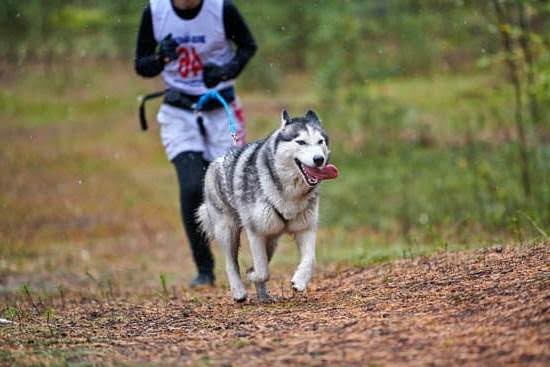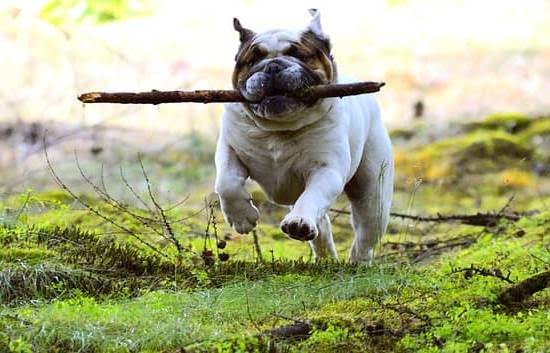Introduction
When cats and dogs live together, intraspecies interaction can be a tricky thing. Even though cats and dogs can become best friends with each other, they carry deeply ingrained instincts that cause them to see their presumptive foes as threats or possible prey to chew on. Despite sharing many qualities such as being intelligent, loyal, and adorable beings, these two infamous species are unfortunately hardwired to take an active dislike of one another. As with humans, it is through positive reinforcement and habit-training that these pets may learn to respect each other. Teaching a dog not to chase after cats can thus become one of the most important tasks in living harmoniously within a pet-friendly environment.
Reading Your Dog’s Body Language
Training a dog not to chase cats requires an understanding of your dog’s body language. Early signs of tension in the body can alert an owner that the dog may be interested in chasing cats and should be immediately corrected. Signs of tension may include erect ears, rigid posture, focused stare, and overall increase in energy level.
To prevent a potential altercation from beginning, owners should remain vigilant when their pup is around cats. Being proactive and shortening the distance between the cat and your pup is often necessary even if the cat is relaxed and curious about your pup. It’s important that you never let the situation escalate into aggression by intervening before it has a chance to reach this point.
If you have noticed that your pup prefers chasing cats over playing with toys or interacting with other people or animals you should provide more exercise for them to decrease their energy levels so they are more likely to ignore cats whenever they come across them. Activities such as walking and running on a regular basis will help keep them tired out enough to stay away from the cats without having to employ any further training.
Managing Human Emotions During Training
When training a dog not to chase cats, it is important for the human involved to remain calm and not allow their emotions to get in the way of the process. Training can be a challenging process and our own feelings can often cloud our judgment. It is important to remember that while training will likely involve some form of correction, it is also essential to provide positive reinforcement when your dog displays the appropriate behavior. This may mean taking an additional step back, calming yourself down, and providing treats when they obey your commands or refrain from chasing after cats. Be patient and remain focused on the goal so as not to let any frustration take over. Additionally, it’s best to create a distraction-free environment with minimal distractions because external stimuli may cause your dog to become distracted or have difficulty focusing. Finally, keep each learning session short but with multiple repetition for better comprehension of commands by your furry pal.
Reducing Fearful Reactions in Your Pet
Training a dog not to chase cats requires a few steps. First, reduce your pet’s fearful reactions towards cats. This can be achieved by showing them that cats are not a threat. Start by introducing them to cats from a distance and in a calm environment. If there isn’t an opportunity to do so, keep visual contact limited and use positive reinforcement whenever your pup sees or is near cats. When training, provide treats when the pup is near cats but keep vocal commands to a minimum. It is important for the pup to associate positive experiences with the presence of cats in order for him to learn that they are not something to fear or run after.
Additionally, you will want to create some boundaries which will help your pup understand what behavior is expected when seeing a cat around him/her. One way to do this is teaching them the ‘stay’ command and reinforcing it each time they obey it when in the presence of cats. You can also practice walking on leash drills where you stop and wait if your pet attempts to bolt towards the cat, then rewarding them with praise or treats when they exhibit good behavior instead of chasing after it. Finally, make sure to always supervise your pet while he/she interacts with other animals—especially cats—so that you can intervene if he/she displays any bad behaviors such as barking or jumping at them aggressively. With consistent practice, patience, and positive reinforcement from owners, dogs should eventually learn not to chase cats around!
Determining the Appropriate Training Technique
Training a dog not to chase cats is possible, but will require time and patience. The first step in training a dog not to chase cats is determining the appropriate training technique. This can depend on the individual needs of the animal, as well as its age and behavior.
One common technique used for training a dog not to chase cats is positive reinforcement. With this technique, rewards are offered when your dog refrains from chasing cats or performs another desired behavior. Positive reinforcement has been proven to be effective in successful training since dogs tend to repeat behaviors that have already been rewarded.
Other techniques that may be useful include command conditioning, wherein spoken commands such as “sit” or “stay” are used in combination with consistency and repetition in order to achieve the desired outcome. Behavior modification can also be helpful, wherein an undesirable behavior such as chasing cats is replaced with an acceptable one, encouraging the dog to choose the acceptable alternative instead of the forbidden one that could lead to consequences, on top of creating additional rules or boundaries around your pet’s activity when in contact with cats, like keeping him leashed during walks if needed. Additionally, desensitization and counter conditioning may also work; desensitizing includes exposing your pup to small and harmless dosages of his fear target until he is no longer frightened by it or associated it with negative implications, while counter conditioning consists of associating something fun or desirable when close by his fear target so it doesn’t become frightening anymore
Setting Boundaries with Cat-Dog Interactions
When training a dog not to chase cats, it is important to set boundaries with cat-dog interactions in the home. This can be done by installing baby gates to keep cats and dogs separated, allowing cats to have their own safe space away from the dog. To further reinforce this boundary, use deterrents such as treats or verbal commands when the dog tries to approach the cat’s area. If necessary, using more extreme measures such as leashing and lightly tugging may help control a particularly rambunctious pup.
It is also important for cats and dogs to become familiar with each other’s scents. Putting a blanket that has been around the other animal’s scent or having them switch beds occasionally can help create a more peaceful environment between them both. Additionally, providing positive reinforcement when they show any type of positive behavior toward one another will encourage them to continue interacting respectfully. Creating special toys or activities that both animals can enjoy together is also essential; this will help the dog learn that chasing a cat isn’t the only way she can play and interact with a cat safely. Finally, remember never to leave your pets alone unsupervised until you feel comfortable that they have learned how to behave around one another properly within their environment.
Using Positive Reinforcement to Promote Good Behaviour
Training a dog not to chase cats is a good way to prevent accidents and harm to both animals. It’s important to remember that it takes time, consistency and patience when training any animal. Positive reinforcement is highly recommended when teaching your dog not to chase cats. This means reinforcing good behaviour with rewards such as treats or praise. Initially, keep your dog on a leash until they have learned you do not approve of them chasing cats. If your pet shows signs of registering your command or shows obedience, reward this with something positive such as a treat or verbal praise. When your dog attempts to chase a cat, distract them by redirecting their attention and then reward them for doing the opposite behaviour—for example, offering a treat if they show a willingness stay back when commanded to do so. This will help create the association between staying away from cats and being rewarded. Continue repeating this process each time you catch your pet trying to chase cats until it becomes second nature for him/her to behave properly in any given situation.
Consulting with a Professional Dog Trainer
When seeking professional help to train your dog not to chase cats, it is important to find a qualified and reputable dog trainer. Ideally, one who has experience training dogs not to chase cats and other animals. A few things to consider include the following:
• Look for credentials that demonstrate their skill level and competency, such as a diploma from an accredited organization or awards from professional associations.
• Ask how long they have been training dogs specifically for this purpose, if applicable.
• Inquire about techniques and methods used for successful results and understand the importance of positive reinforcement.
• Request proof of liability insurance in case any injury should occur during a session.
• Ask for references from previous clients who have had similar experiences in order to assess their performance quality.
Finally, always trust your intuition about someone who will be working with your companion animal — believe that you will make the right choice!
Conclusion
Unfortunately, not all cats and dogs get along. The good news is that by taking the necessary steps to train a dog not to chase cats, it’s possible to live in harmony with your pets. Start by introducing the cat and dog in controlled settings while they remain leashed. Then redirect the dog’s energy with activities like walks, fetch, or swimming sessions. Increase their supervised time together over the course of several weeks until the animals are comfortable around each other. Be sure to reward good behavior and provide mental stimulation for your dog to prevent chasing behaviour from being reinforced with attention or treats. Lastly, don’t forget about providing plenty of scratch posts and hiding places for cats so they can take refuge if needed during playtime. By following these guidelines for healthy cat-dog relationships, you can ensure a happy, safe home for all of your beloved pets!

Welcome to the blog! I am a professional dog trainer and have been working with dogs for many years. In this blog, I will be discussing various topics related to dog training, including tips, tricks, and advice. I hope you find this information helpful and informative. Thanks for reading!





